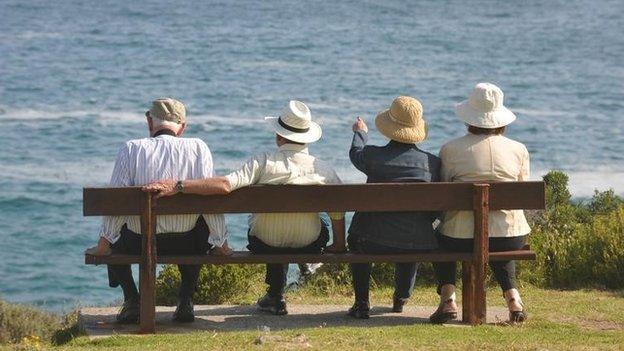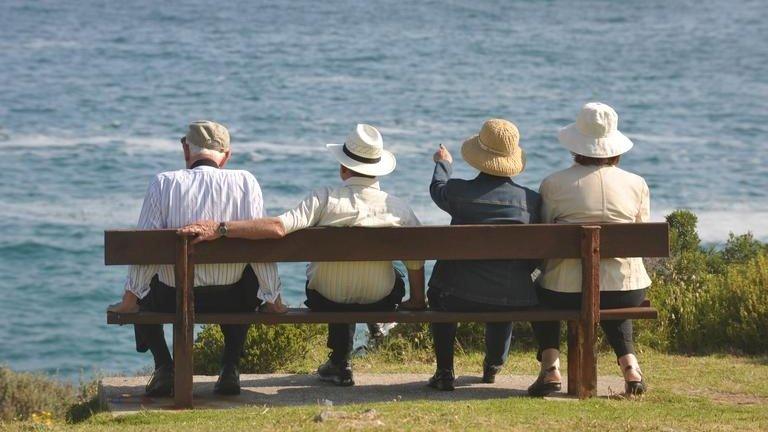Older female employment rate to overtake men
- Published

Women in their late sixties could have a higher employment rate than men of the same age by the 2020s, says an Institute for Fiscal Studies survey.
Employment rates for women in their late sixties are already at their highest level in 40 years.
That trend is likely to accelerate and the female rate could overtake that of men in the early 2020s, the IFS said.
A rise in the state pension age and increasing health levels are the main reasons for the trend, the IFS said.
'Further and faster'
Its study looked at demographic and financial factors affecting people aged 65 and over in England up to 2022-23.
By 2022-23 the proportion of women aged 65 to 69 in work could reach 37%, up from 16% in 2010-11 and 8% in 2000, the IFS said.
Meanwhile, the percentage of employed men in this age group could rise from 29% to 33% over the same period.
Katy Heald, a senior researcher at the IFS, said that employment rates would increase "further and faster" over the coming years.
"This reflects improving health, as well as being a response to the rising state pension age. Of course while increasing earnings will boost the incomes of these women, longer working lives will not necessarily leave them better off in a broader sense," Mrs Heald said.
Today's report continues a rising trend of older people working for longer.
The Office for National Statistics said earlier this month that between February and April there were 435,000 women workers aged 65 or over.
That is 12% up on the same period last year.
There were 664,000 men in that age bracket recorded as employed during this period, which is 8% more than a year earlier.
Pension changes
The state pension had been 60 for women and 65 for men; under changes to pension rules, the age for both sexes will rise to 68 over several years.
If people work for longer, they are likely to be richer and less lonely, the IFS said.
The net incomes of 65 to 74 year-olds is expected to grow by an average 3% each year between 2014-15 and 2022-23.
Net income among those aged 75 and over will only grow half as fast, at 1.6% per year, the IFS said.
Richer and healthier
Older women will also be healthier, according to the IFS.
In each age group the proportion of women with no substantial health problems is expected to rise by more than 5 percentage points.
The proportion of people aged 65 to 74 who are healthy are expected to increase from 39% to 47%, the IFS said.
The number of older people living alone is also set to fall.
The IFS projected that 38% of people aged 85 and over will live in couples in 2022-23, up from 25% in 2010-11.
"This is good news as people in couples are healthier, less lonely, and have higher incomes. Incomes of those aged 65 and over in general will also continue to rise, partly reflecting higher employment rates," said Andrew Hood, a research economist at the IFS and an author of the report.
- Published19 May 2014

- Published20 March 2014
